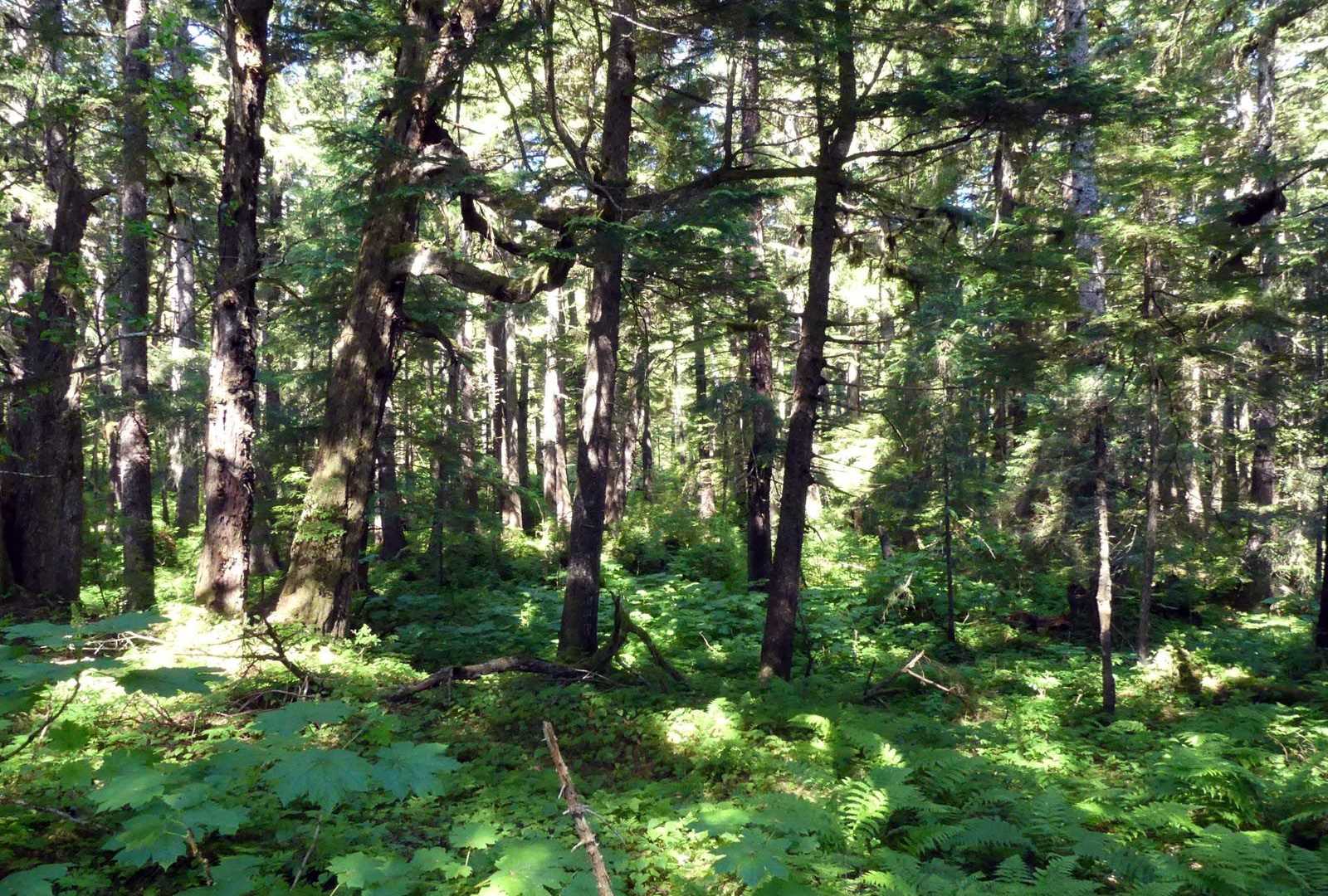The Tongass National Forest of Southeast Alaska is the largest unit of the United States Forest Service, at 16.8 million acres. It includes the last great contiguous stands of temperate rainforest in North America. Today we had the opportunity to explore the forest at Iyoukeen Cove, on the east coast of Chichagof Island, bordering Chatham Strait. Here, the forest birds have never had their warbles and trills drowned out by the sound of the lumberman’s ax or chainsaw, the bald eagles have never had their massive twig nests fall to the ground as the massive forest trees were cut, the coastal brown bears, quite possibly, have never had an encounter with mechanized humans. Our path through the forest was made by generations of bears that have followed the same route, parallel to the beach, a few meters into the forest. This was an old growth forest stand, the end point of a process of forest development of succession that began with the last retreat of the glacial ice some 12,000 years ago. The same massive Sitka spruce and western hemlock trees that now dominate the forest were here in 1741 when Vitus Bering in the Saint Peter first brought European eyes to what is now Alaska, in 1778 when the great navigator James Cook sailed through in search of the entrance to the Northwest Passage, and in 1793 when his protégé, George Vancouver assigned the name of one of his two vessels, HMS Chatham, to this waterway on his epic voyage of geographic discovery. These trees can live for 500 to 1,000 years.
We entered to forest by pushing through the fringing strand of beach rye grass, cow parsnip, and Sitka alder. The forest opened up, and our bear trails wound around and occasionally over fallen trees now covered with moss and lichens that serve as a nursery for the next tree generation. Sunlight filtered through the forest canopy far above us, allowing the growth of a rich ground cover of mosses, ferns, and the heart-shaped leaves of false lily-of-the-valley. We found the stalks of the coral root orchid; it lacks leaves altogether, instead gaining its nutrition from fungi that are intimately connected with its roots. Mosses and lichens occur on and hang from branches high in the canopy. The lung lichens, on tree limbs far above us, take nitrogen from the air. When it falls to the ground below, the nitrogen is added to the forest soil. All of this and more we saw as we explored the old growth forest.
Exploration also occurred using our water toys: kayaks, and, for the more daring among us, stand-up paddleboards. Then, we reboarded National Geographic Sea Lion and turned toward the south and further adventures that await us.







